How to Get Leaves Out of Mulch: 6 Effective Tips & Tricks
-
Chris Dinesen Rogers
- Last updated:
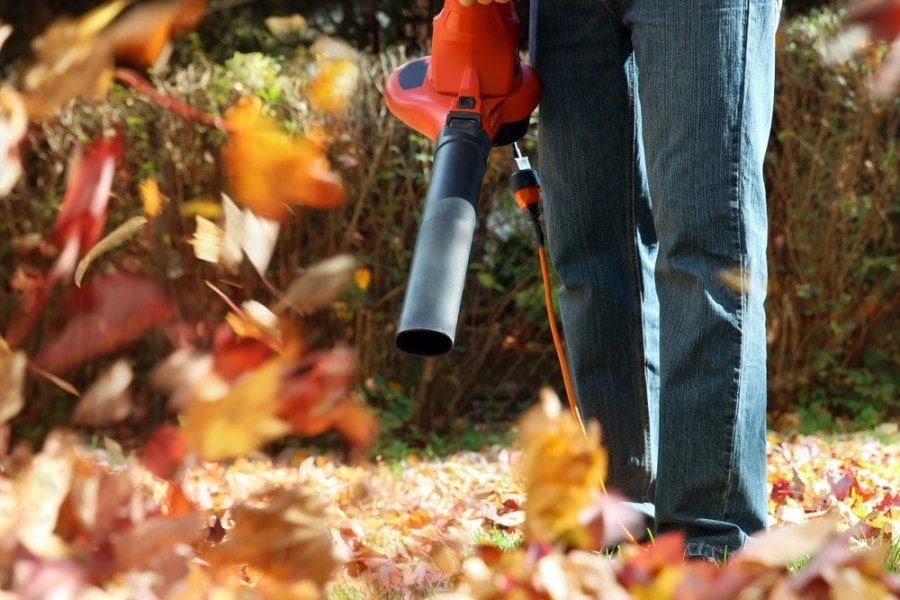
We feel your pain when you spend hours maintaining your landscaping only to have leaves cover everything again within a couple of hours. They’re in your flower beds, on your deck, and in your mulch. The problem with leaves is they can defeat the purpose of this protective covering. They can interfere with the airflow and encourage bacterial development and diseases. That’s the last thing you want.
Fortunately, you have options if you don’t want them in the yard. Our solutions run the gamut from hands-off to easy to labor-intensive. Remember that you can choose more than one to get the job done.
How to Get Leaves Out of Mulch
1. Prevention With Landscape Fabric

We’re big fans of prevention because it often means less work than any of the ones on our list. We think the best way to get leaves out of mulch is to make sure they don’t get there in the first place! Landscape fabric provides an easy means to keep the leaves from getting into your mulch. Simply put it down before they start flying and remove it when the trees are bare.
2. Leaf Blower With or Without a LeafWHIP
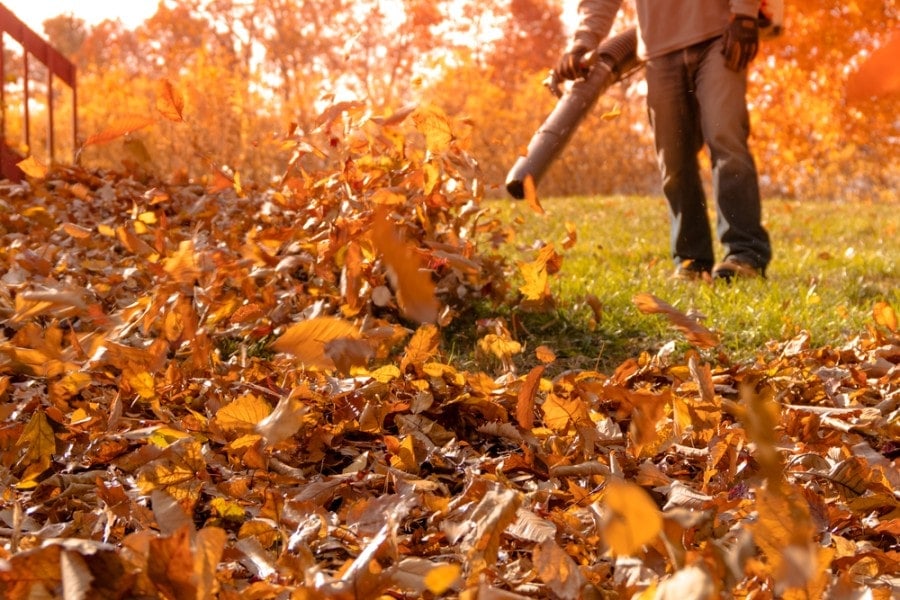
A leaf blower can remove leaves from your mulch, but it requires a deft hand. You don’t want to direct them into the mulch. You should move the leaves up and over and away from the mulch. You can get a LeafWHIP blower attachment to make things easier since it’ll work them out of the substrate. You don’t have to worry about the airflow as much as you would without it.
3. Leaf Vacuum
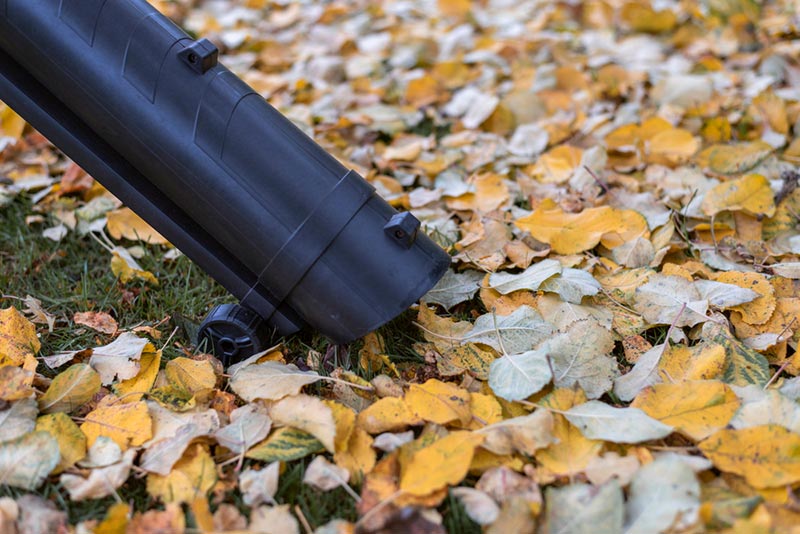
A leaf vacuum is another riff on a mechanical device to get rid of them from your mulch. It uses suction to collect and break them down to optimize its bag capacity. It’s just as much work using this tool as the last one on our list. If you have a big backyard, you’re in for a significant battle, especially if you have many mulched areas.
4. Adjustable Rake
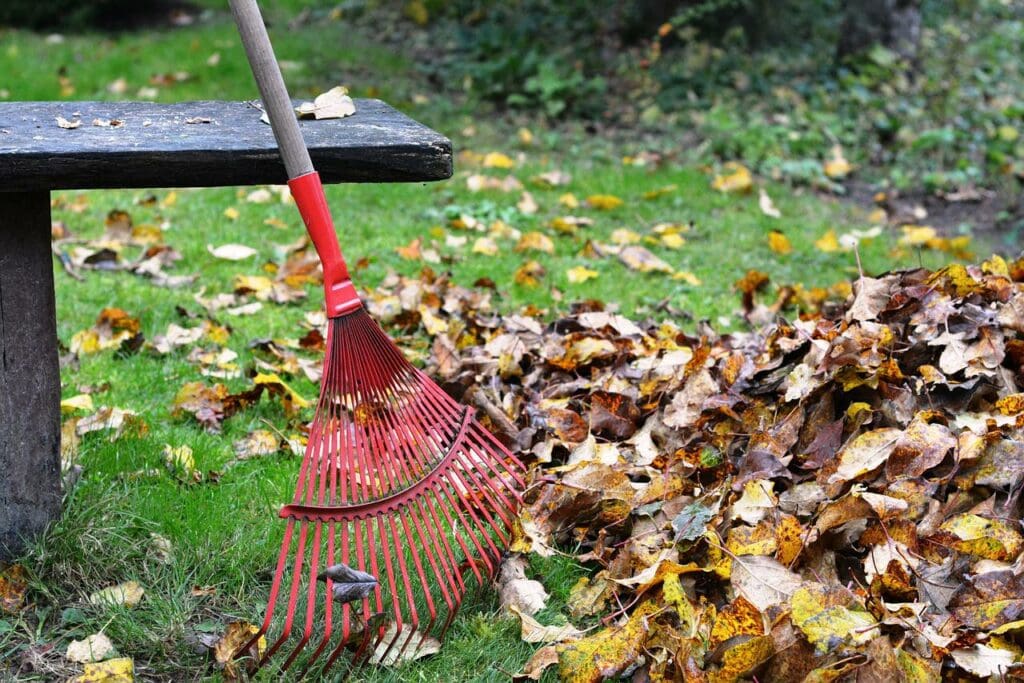
An adjustable rake is an excellent choice if you have a small mulched area, particularly if you have delicate plants in this spot. It’s not as back-breaking as other methods, either.
You have a lot of control using this tool. It can also have various applications instead of leaves. You can also use it in places with different types of ground cover, like stones or pebbles.
5. Manual Sorting
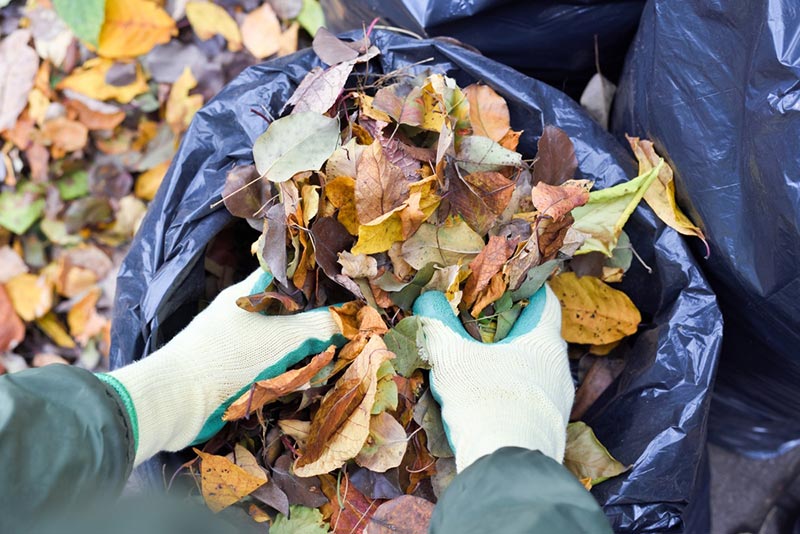
You probably expected this option but most likely didn’t want to consider it. You can always pick out the leaves manually. It’s a viable choice if you have a small area to clear.
Bear in mind that the timespan for falling leaves is relatively long. You have a lot of work on your hands through the autumn weeks. If you opt for this solution, we suggest using it with another one to make it easier.
6. Adding to the Mulch
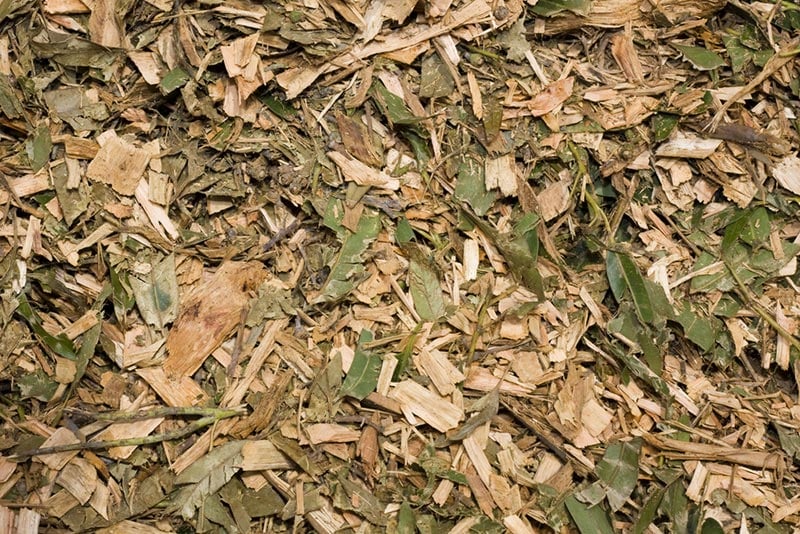
The problem with leaves isn’t so much the fact that they’re in the mulch. It’s the total accumulation and depth that causes issues. You can alleviate it by merely working them into the mulch to become part of the humus that will eventually get incorporated into the soil. It’s not a bad choice since it will boost its nutritional value, which will, in turn, benefit the plants as compost.
How to Use Mulch
We discussed the benefits of mulch to make maintenance easier for you. Different types are better suited to specific situations. For example, wood or bark isn’t appropriate in low-lying areas where the material can rot. Using river rocks or pea pebbles might offer a more effective solution. If you use organic materials, you shouldn’t put them too close to existing vegetation or your house’s foundation.
It can cause rot and provide a pathway for rodents to invade your home. Remember that you can use fallen leaves as mulch. Using a mower equipped with the appropriate blade can make it a piece of cake to make the vegetation your friend instead of an enemy. You should also use an appropriate depth of mulch to get the most benefits from using it.
Final Thoughts
Landscaping and being fastidious go hand in hand. That’s not a criticism. After all, you’ve worked hard to make your yard look its best. It’s part of your home’s curb appeal. We can understand why you’d obsess about getting the leaves out of your mulch.
Fortunately, you have many ways to get rid of them and keep your vision of your landscaping intact with as much or as little effort as you’d like.
Featured Image Credit: Saklakova, Shutterstock
Contents
